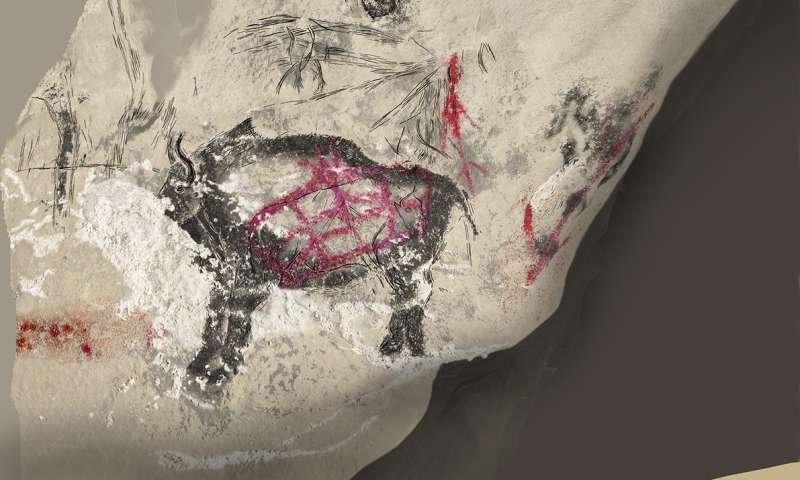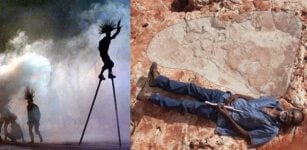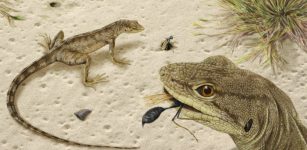Meet Elusive ‘Higgs Bison’: DNA Reveals 15,000 Year-Old Unknown Species Painted In The Marsoulas Cave
MessageToEagle.com – An unknown Ice Age species that was once present on Earth is nicknamed the ‘Higgs Bison’ (in reference to the Higgs Boson or ‘god particle’) due to its elusive nature.
Scientists have discovered paintings of this animal on ancient cave walls. The ‘Higgs Bison’ was present on Earth a very long time ago.

Ancient DNA research has revealed that Ice Age cave artists recorded a previously unknown hybrid species of bison and cattle in great detail on the Marsoulas cave walls, in Southwestern France more than 15,000 years ago.
The cave paintings depict bison with either long horns and large forequarters, more like the American bison, which is descended from the Steppe bison or with shorter horns and small humps, more similar to modern European bison.
The mystery species, originated over 120,000 years ago through the hybridization of the extinct Aurochs (the ancestor of modern cattle) and the Ice Age Steppe Bison, which ranged across the cold grasslands from Europe to Mexico.
Later, it became the ancestor of the modern European bison.

An international team of researchers from the Australian Centre for Ancient DNA (ACAD) at the University of Adelaide, University of California, Santa Cruz (UCSC), Polish bison conservation researchers, and palaeontologists across Europe and Russia studied ancient DNA extracted from radiocarbon-dated bones and teeth found in caves across Europe, the Urals, and the Caucasus to trace the genetic history of the populations.
“Finding that a hybridization event led to a completely new species was a real surprise – as this isn’t really meant to happen in mammals,” says study leader Professor Alan Cooper, ACAD Director.
“The genetic signals from the ancient bison bones were very odd, but we weren’t quite sure a species really existed – so we referred to it as the Higgs Bison.”
See also:
Exceptional Paleolithic-Era Cave Drawings Discovered Underground In The Atxurra Cave
Nonhuman ‘Hands’ Found in Prehistoric Rock Art
Radiocarbon dating showed that the mystery species dominated the European record for thousands of years at several points, but alternated over time with the Steppe bison, which had previously been considered the only bison species present in Late Ice Age Europe.
“The dated bones revealed that our new species and the Steppe Bison swapped dominance in Europe several times, in concert with major environmental changes caused by climate change,” says lead author Dr Julien Soubrier, from the University of Adelaide.

“When we asked, French cave researchers told us that there were indeed two distinct forms of bison art in Ice Age caves, and it turns out their ages match those of the different species. We’d never have guessed the cave artists had helpfully painted pictures of both species for us.”
Radiocarbon dating showed that the mystery species dominated the European record for thousands of years at several points, but alternated over time with the Steppe bison, which had previously been considered the only bison species present in Late Ice Age Europe.
“The dated bones revealed that our new species and the Steppe Bison swapped dominance in Europe several times, in concert with major environmental changes caused by climate change,” says lead author Dr Julien Soubrier, from the University of Adelaide. ”
When we asked, French cave researchers told us that there were indeed two distinct forms of bison art in Ice Age caves, and it turns out their ages match those of the different species. We’d never have guessed the cave artists had helpfully painted pictures of both species for us.”
Top image: Bison, Horses and other Animals – Credit: Weston Westmoreland
MessageToEagle.com











